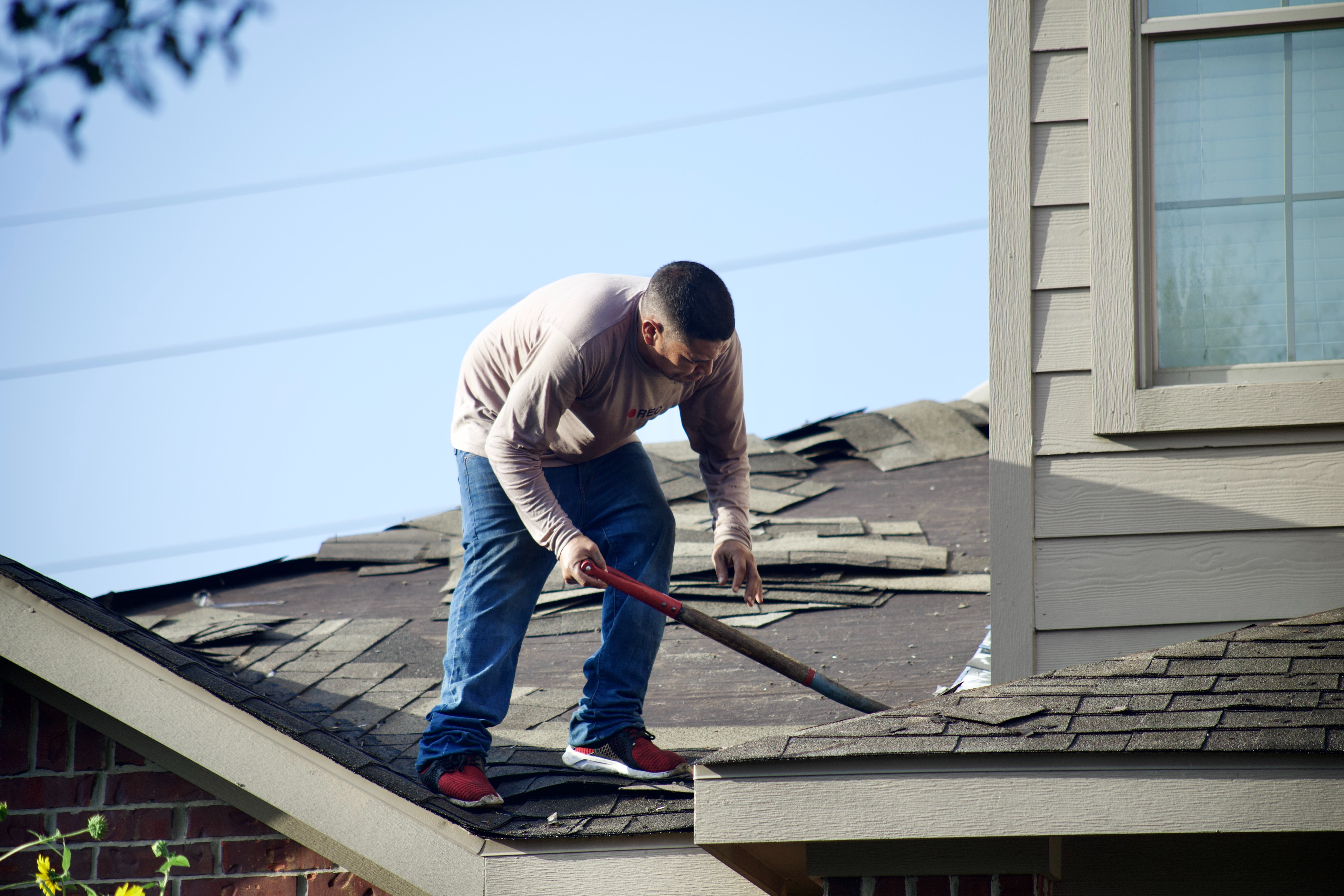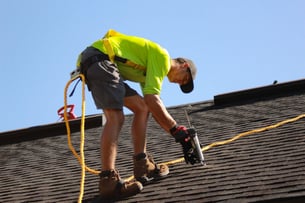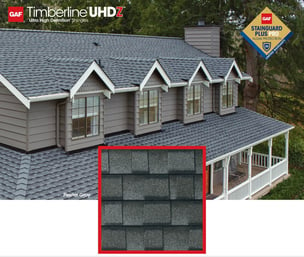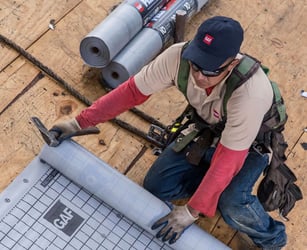
Roof replacement is a substantial home improvement task that directly impacts your home's safety, functionality, and aesthetics. It involves intricate steps, from the initial assessment to material selection, installation, and ensuring a perfect finish. Many homeowners wonder if they can undertake this hefty task themselves to save on costs or simply enjoy the satisfaction of a DIY project. Are you one of them?
RoofCrafters has been a name in the roofing industry for nearly thirty years. When we say the task of replacing a roof is no small feat, boy, do we mean it. There are numerous steps and practices involved in this line of work, and you simply have to know what you're doing. However, many still decide to perform a roof replacement themselves with no help. Is it worth it? Let's discuss it here!
In this article, we'll explore the factors to consider when deciding if you can replace your own roof. While it may seem relatively simple, you must know what's involved in the roof replacement process so you know what you're in for if you are brave enough to try to pull it off. Let's begin!
What to Consider: DIY Roof Replacement Addition
Replacing a roof is a significant task, and for homeowners, the question of whether to tackle this project themselves is a critical one. With proper knowledge and preparation, some homeowners may decide to take on this project.
Assessing Your Skills and Knowledge
The first step in determining whether you can replace your own roof is to evaluate your skills and knowledge honestly. Roof replacement involves multiple stages, including assessing the existing roof, removing old materials, repairing or replacing the underlying structure, and correctly installing new roofing materials. Do you possess the skills to handle these tasks effectively and safely? If you have experience in carpentry, construction, or a related field, you may have a solid foundation to take on this project. But in most cases, it's better to leave it up to the professionals.
Understanding Safety Concerns
Roof replacement is about knowing how to handle tools/materials and ensuring safety. Working at heights presents significant risks, and falls from roofs can result in severe injuries or even fatalities. Do you have the necessary safety gear, equipment, and knowledge to mitigate these risks? Prioritize safety, and if you have any doubts about your ability to maintain a safe working environment, it might be best to hire a professional.

Evaluating the Scope of the Project
Consider the size and complexity of your roof. A small, simple roof with a slight slope may be more manageable for a DIY project. However, if your roof is large, has a steep pitch, or involves intricate designs, it can quickly become a challenging task. A complex project may require professional expertise to ensure it's completed accurately and within a reasonable timeframe.
Calculating the Costs and Savings
One of the main reasons homeowners consider DIY roof replacement is to save on costs. Calculating the estimated cost of materials, tools, equipment, permits, and any potential unexpected expenses is crucial. Compare this to the cost of hiring a professional roofer. While DIY may seem cost-effective initially, the value of hiring a professional who can complete the project efficiently and with quality workmanship should not be underestimated. Insurance is another factor consider.
What's Included in a Roof Replacement?
To give you a broader scope of what a roof replacement entails, let's get into the details of what to expect.
Initial Assessment and Planning
The process begins with a thorough assessment of the existing roof. Roofers examine the roof's condition, identifying any damage, leaks, or weak spots. They evaluate the type of roofing material, its age, and the underlying structure. Based on this assessment, roofers plan the replacement, determining the materials needed and the estimated timeline for the project.
Material Selection
Selecting the appropriate roofing material is a critical step. The choice of material depends on factors such as climate, budget, and aesthetic preferences. Common materials include asphalt shingles, metal roofing, tiles, or wood shakes. Roofers work closely with homeowners to choose the best material that meets their needs in terms of durability, style, and cost.

Removing the Old Roof
Before installing a new roof, the old roofing material must be completely removed. Roofers carefully strip off the existing shingles, underlayment, and any damaged or rotten decking. Thorough removal is crucial to assess the structure's integrity and ensure a clean base for the new roof.
Inspecting and Repairing the Deck
After removing the old roofing material, roofers inspect the decking (the base of the roof) for any signs of damage or weakness. Any damaged sections are repaired or replaced to create a sturdy foundation for the new roofing system. This step ensures structural integrity and prevents future issues.
Applying Underlayment and Flashing
Once the deck is prepared, roofers install an underlayment, a protective layer that adds an extra barrier against water infiltration. They also apply flashing around roof protrusions like chimneys and vents to prevent water seepage and ensure a watertight seal.

Installing the New Roofing Material
With the preparatory work completed, roofers begin installing the selected roofing material. Each type of roofing material has its specific installation process.
Ventilation and Insulation
Proper ventilation and insulation are vital for a functional and energy-efficient roofing system. Roofers ensure that vents are appropriately placed to allow airflow and prevent moisture buildup. They also install insulation to regulate temperature, reduce energy costs, and enhance overall comfort within the home.
Cleaning and Final Inspection
Once the new roof is installed, roofers conduct a thorough cleanup of the work area, removing debris and ensuring the property is left tidy. A final inspection is performed to confirm that the roof replacement adheres to industry standards and meets the homeowner's expectations.

Ask yourself this- could you do all of that on your own? If not, please leave this task up to the experts. Messing up your new roof will cost so much more than it's worth. When in doubt, play it smart!
Should I Replace My Own Roof?
The decision to replace your roof hinges on a variety of factors! Assess your skills, knowledge, and comfort level with the project's complexity and safety requirements. Consider the scope of the project and evaluate the costs and potential savings. Ultimately, if you are well-prepared, possess the necessary skills, and prioritize safety, a DIY roof replacement may be a feasible undertaking. However, for a more complex or safety-sensitive project, hiring a professional roofing contractor is an essential choice to ensure a successful and secure roof replacement.
If you live in one of our service areas, help is right around the corner! When you're ready, visit our contact page to connect with one of our lovely RoofCrafters representatives. We're thrilled about the opportunity to take on your roofing project!
My name is Kevin Mills, and I am the lead estimator for RoofCrafters’ Tampa division. I’m originally from Michigan, and I enjoy hunting, fishing, and spending any free time outdoors. What I’m most passionate about, though, is helping business owners and homeowners alike achieve their roofing goals, all while providing a seamless customer journey.




